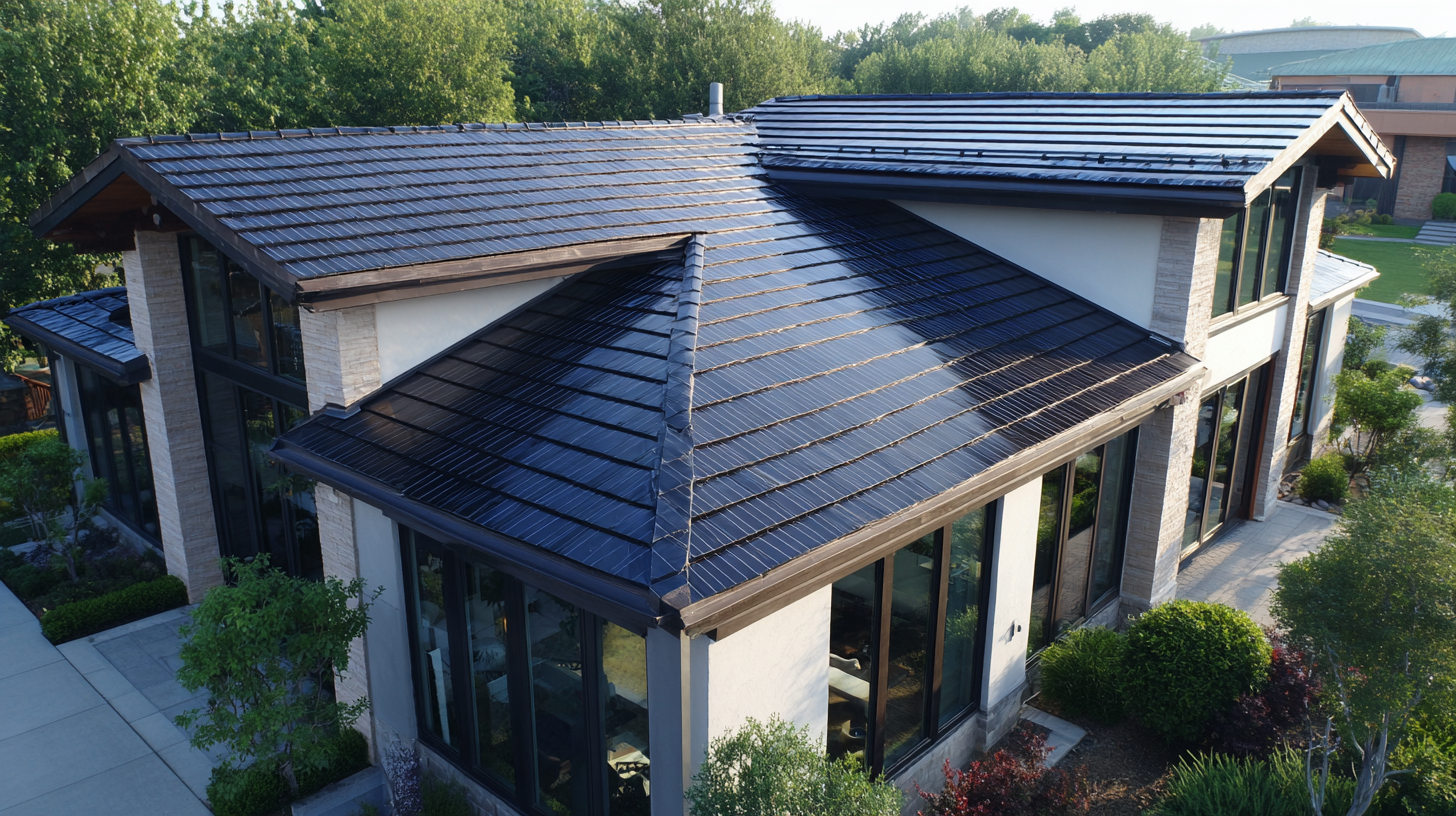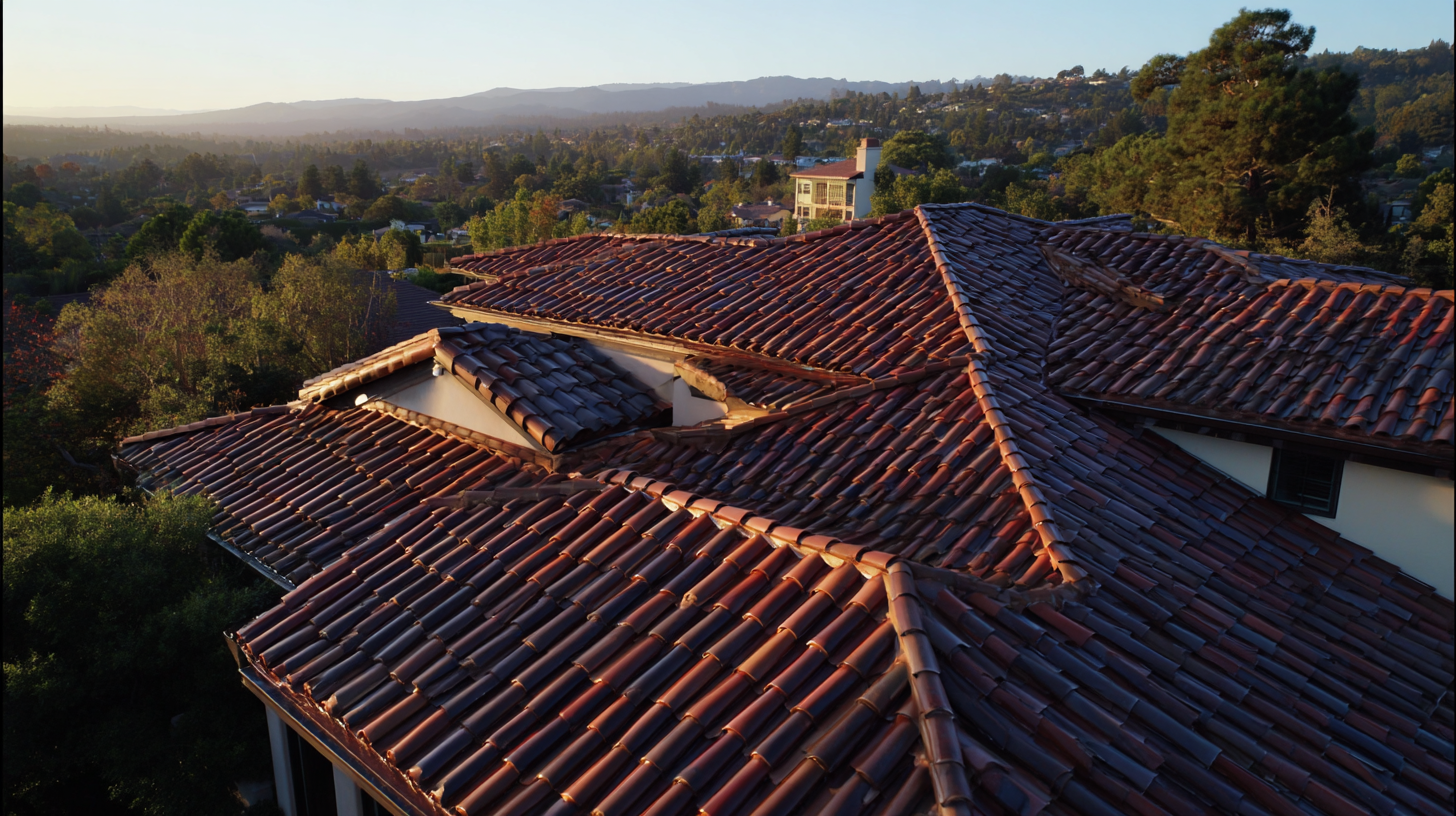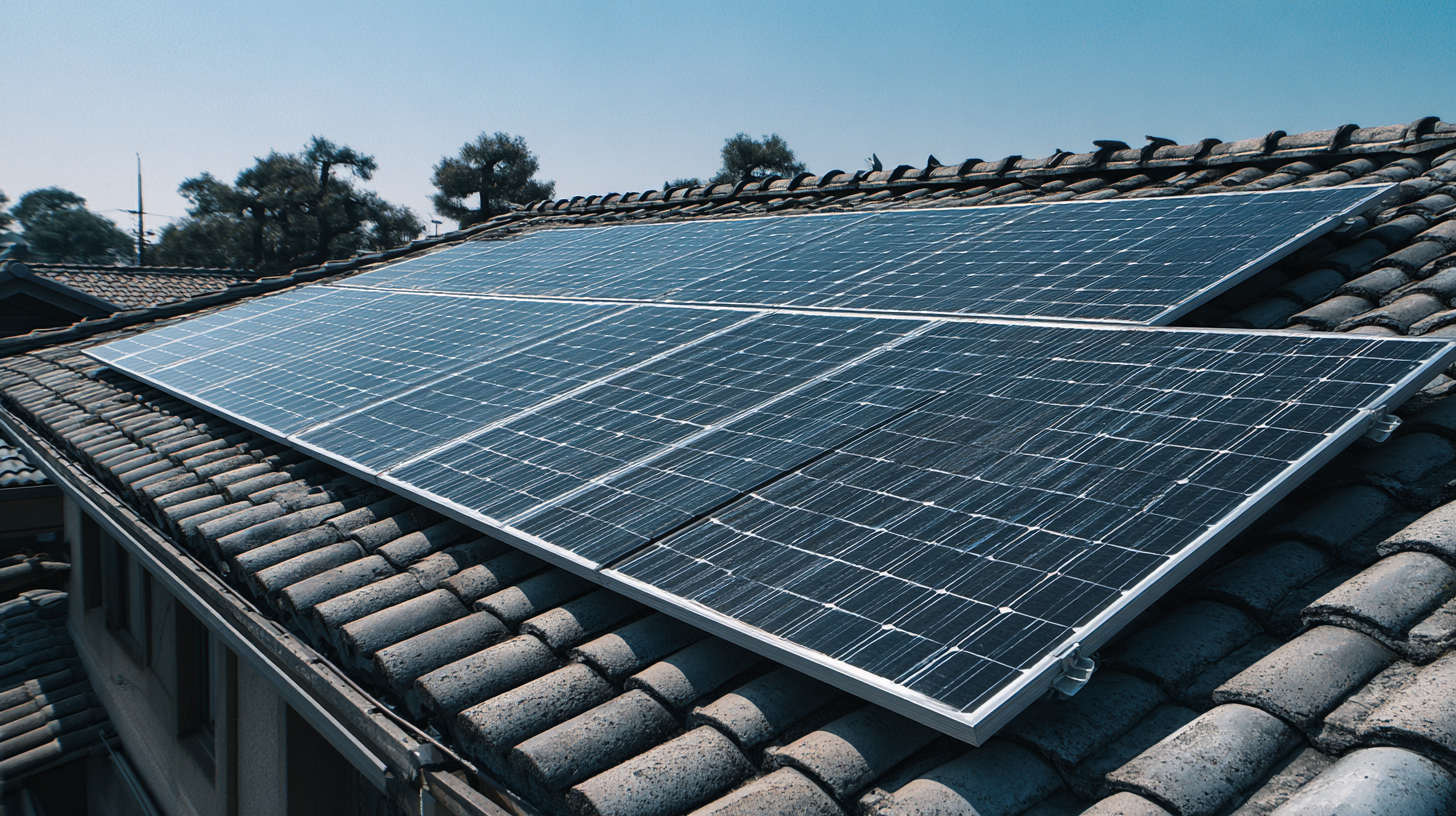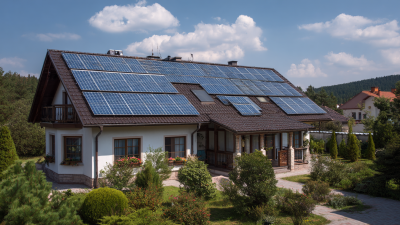Ultimate Guide to Choosing the Best Solar Roof Tiles for Your Home
As the demand for renewable energy sources continues to rise, homeowners are increasingly considering solar roof tiles as a sustainable solution for energy generation. According to a recent report by the International Energy Agency (IEA), solar power is expected to account for approximately 22% of the global electricity generation by 2040, highlighting the growing significance of solar technology in our daily lives. Solar roof tiles, such as those developed by leading manufacturers, combine energy efficiency with aesthetic appeal, allowing homeowners to harness solar energy without compromising the visual integrity of their homes. With the global market for solar tiles projected to reach $5.2 billion by 2026, it is vital for consumers to understand the features, benefits, and various options available to them. This ultimate guide aims to simplify the process of choosing the best solar roof tiles for your home, ensuring you make an informed and beneficial investment.

Understanding the Different Types of Solar Roof Tiles Available Today
When considering a solar roof tile installation, it's crucial to understand the various types available on the market today. The primary options include monocrystalline, polycrystalline, and BIPV (Building-Integrated Photovoltaics) tiles. Monocrystalline tiles, known for their high efficiency, typically convert 15-22% of sunlight into usable energy. They are made from a single crystal structure, which provides a sleek appearance and requires less space for energy generation. In contrast, polycrystalline tiles, formed from multiple silicon crystals, range in efficiency from 13-16% and are often more affordable, making them a popular choice for homeowners on a budget.
Meanwhile, BIPV solar tiles serve a dual purpose: replacing traditional roof materials while generating electricity. According to the International Energy Agency, the market for BIPV is expected to grow significantly, driven by rising demand for sustainable building solutions. These tiles typically provide lower efficiency levels (around 10-15%) than traditional panels, but they offer an aesthetically pleasing alternative that seamlessly integrates with home design. Understanding these options empowers homeowners to choose the most suitable solar roof tiles based on their energy needs, aesthetic preferences, and budget considerations.
Ultimate Guide to Choosing the Best Solar Roof Tiles for Your Home
| Type of Solar Roof Tile | Efficiency (%) | Weight (lbs/sq ft) | Cost ($/sq ft) | Warranty (Years) |
|---|---|---|---|---|
| Monocrystalline | 15-22 | 2.5 | 3.00-4.50 | 25 |
| Polycrystalline | 13-16 | 3.0 | 2.00-3.50 | 25 |
| Thin-film | 10-12 | 1.5 | 1.50-2.50 | 10-20 |
| Solar Shingles | 12-20 | 2.4 | 3.50-5.00 | 20-25 |
| Building Integrated PV (BIPV) | 10-15 | Varies | Higher | 20 |
Key Factors to Consider When Choosing Solar Roof Tiles for Your Home
When it comes to choosing the best solar roof tiles for your home, several key factors should guide your decision. First and foremost is efficiency; higher efficiency tiles can convert more sunlight into electricity, providing greater energy savings in the long run. Homeowners should consider the types of solar tiles available, as each comes with its own set of benefits and drawbacks. Understanding how different materials perform under varying weather conditions is crucial for ensuring durability and performance.
Additionally, the integration of aesthetic appeal and energy generation capabilities is paramount. Many homeowners desire solar solutions that complement their home’s design while also delivering reliable power. Researching customer reviews and ratings can offer insight into real-world performance and satisfaction levels. Furthermore, be mindful of the warranty options provided by manufacturers, as this reflects the confidence they have in the longevity of their products. With advancements in technology continually shaping the solar market, staying informed about emerging trends in sustainable materials will help you make the right investment for years to come.

Top 5 Benefits of Installing Solar Roof Tiles Over Traditional Solar Panels
As homeowners increasingly prioritize sustainability and energy efficiency, solar roof tiles have emerged as a compelling alternative to traditional solar panels. These innovative roofing options not only generate power but also blend seamlessly into the aesthetic of a home, offering a significant technical advantage in modern residential construction. Unlike bulky solar panels, solar roof tiles maintain the classic appearance of traditional roofing while providing an eco-friendly solution to energy needs.

One of the top benefits of opting for solar roof tiles is their impressive durability. Designed to withstand environmental stresses such as bird droppings, harsh weather conditions, and even shadowing effects, these tiles enhance the longevity of your roof. Additionally, they contribute to a more sustainable society by promoting energy independence and reducing reliance on fossil fuels. Homeowners can embrace energy efficiency without compromising on style, creating a win-win situation for both the planet and their property. As the roofing market trends towards sustainability, investing in solar roof tiles positions homeowners at the forefront of this green revolution.
Cost Comparison: Solar Roof Tiles vs. Conventional Roofing Materials
When comparing solar roof tiles to conventional roofing materials, understanding their costs is essential for homeowners considering this investment. Solar roof tiles often range between $35,000 to $75,000, reflecting their dual function as both a roofing material and a source of renewable energy. While the initial outlay may be substantial, these tiles offer long-term savings on energy bills and can significantly increase your home's value. The aesthetic appeal of solar tiles also allows them to blend seamlessly with traditional architecture, addressing concerns homeowners may have about the visual impact of solar panels.
**Tips:** When calculating the overall cost, consider not only the initial installation but also the lifespan and maintenance of your roofing material. Solar tiles can mitigate electricity costs while enhancing your home’s curb appeal. Additionally, be aware of potential tax credits or incentives that can offset some of the financial burden of installing solar technology on your roof.
This decision also hinges on performance; newer technologies are making these tiles more efficient, often making them a competitive option against high-end conventional roofs. Always evaluate your specific needs and consult with professionals to assess which option aligns best with your budget and lifestyle.
Maintenance Tips and Longevity: Ensuring Your Solar Roof Tiles Last
When considering the installation of solar roof tiles, maintenance and longevity are critical factors homeowners often overlook. Routine upkeep is essential to ensure that these tiles perform efficiently over time. It’s important to regularly check for debris accumulation and inspect for any loose tiles or damage that might occur due to weather conditions. If ignored, these minor issues can lead to inefficiencies in energy production and even costly repairs down the line.
In addition to weekly or seasonal maintenance, understanding the lifespan of your chosen solar roof tiles is crucial. Many premium options on the market today promise longevity due to superior materials and technology. However, selecting the right type, such as monocrystalline or innovative solar shingles, can significantly impact both their lifespan and efficiency. Being proactive with maintenance and selecting high-quality products will not only enhance your home’s energy efficiency but also ensure that you maximize your investment in sustainable energy.
Solar Roof Tiles Longevity Comparison
This chart compares the average lifespan of different solar roof tiles, showcasing how various types can affect the longevity of your solar roofing system. Proper maintenance can further enhance their lifespan.
Related Posts
-

Ultimate Guide to Harnessing Solar Power Tiles for Sustainable Energy Solutions
-

Navigating Import and Export Certifications for the Best PV Tiles in the Global Market
-

Exploring the Revolution: What are Solar Cell Roof Tiles and Their Benefits?
-

How to Maximize Energy Efficiency with PV Tiles: Insights and Innovations in Solar Technology
-

Understanding Issues with pv tiles in Modern Construction
-

Ultimate Guide to Maximizing Energy Efficiency with Solar Thermal Panels in Your Home